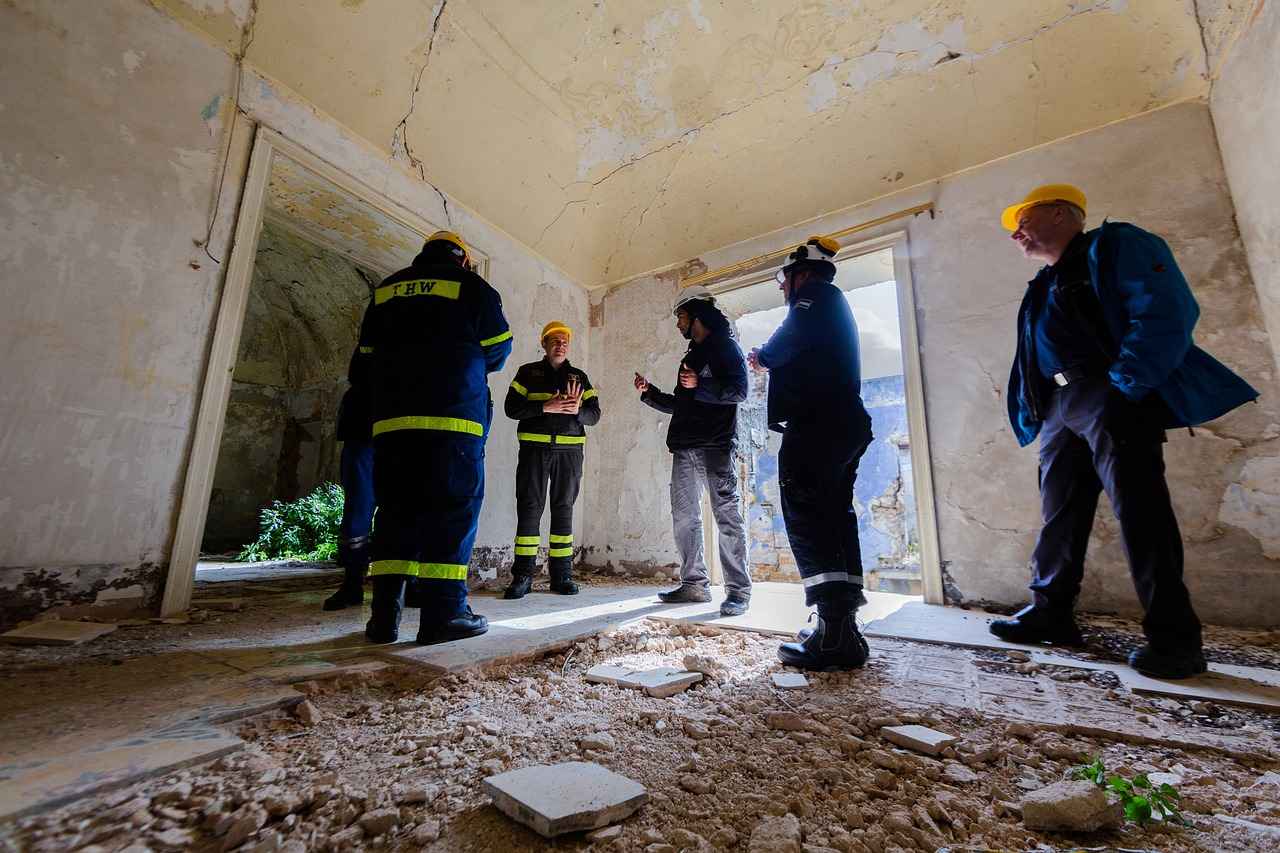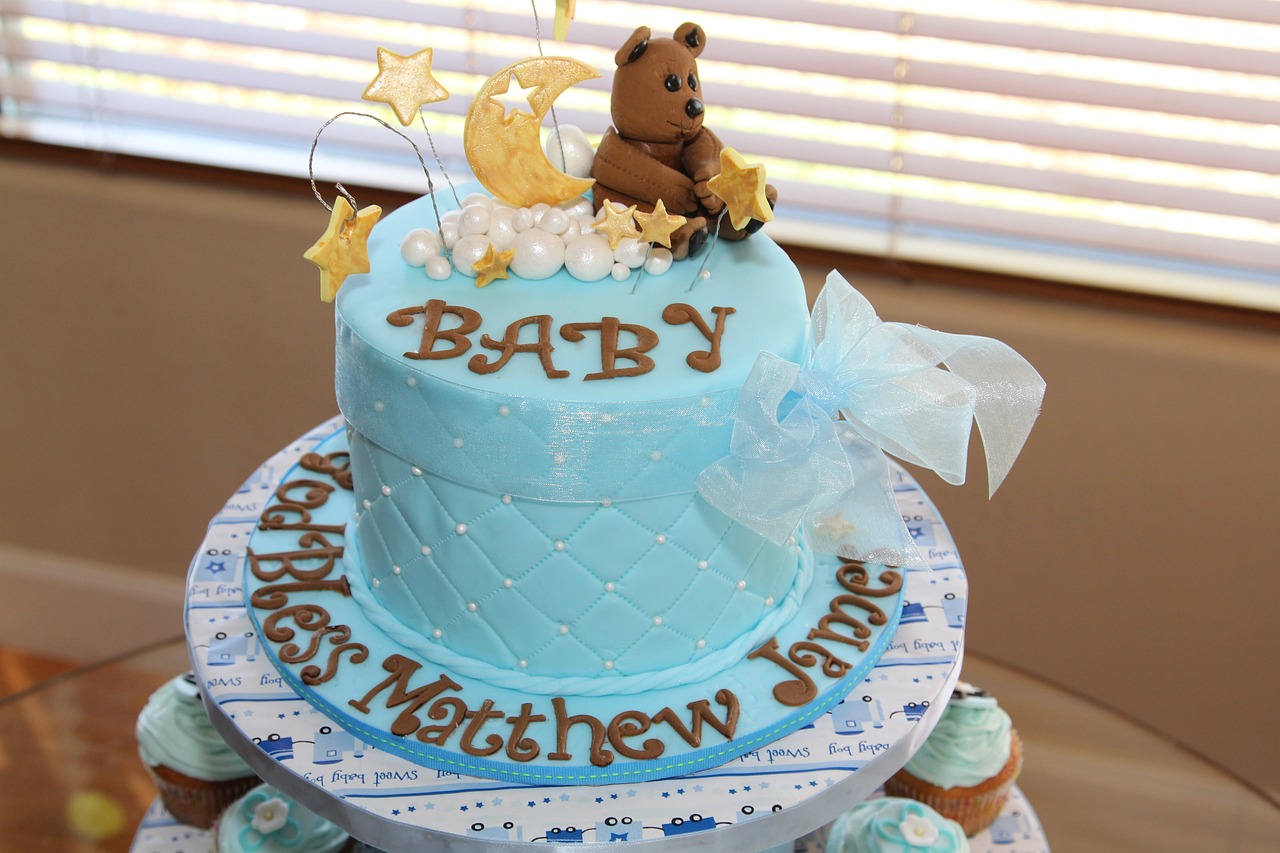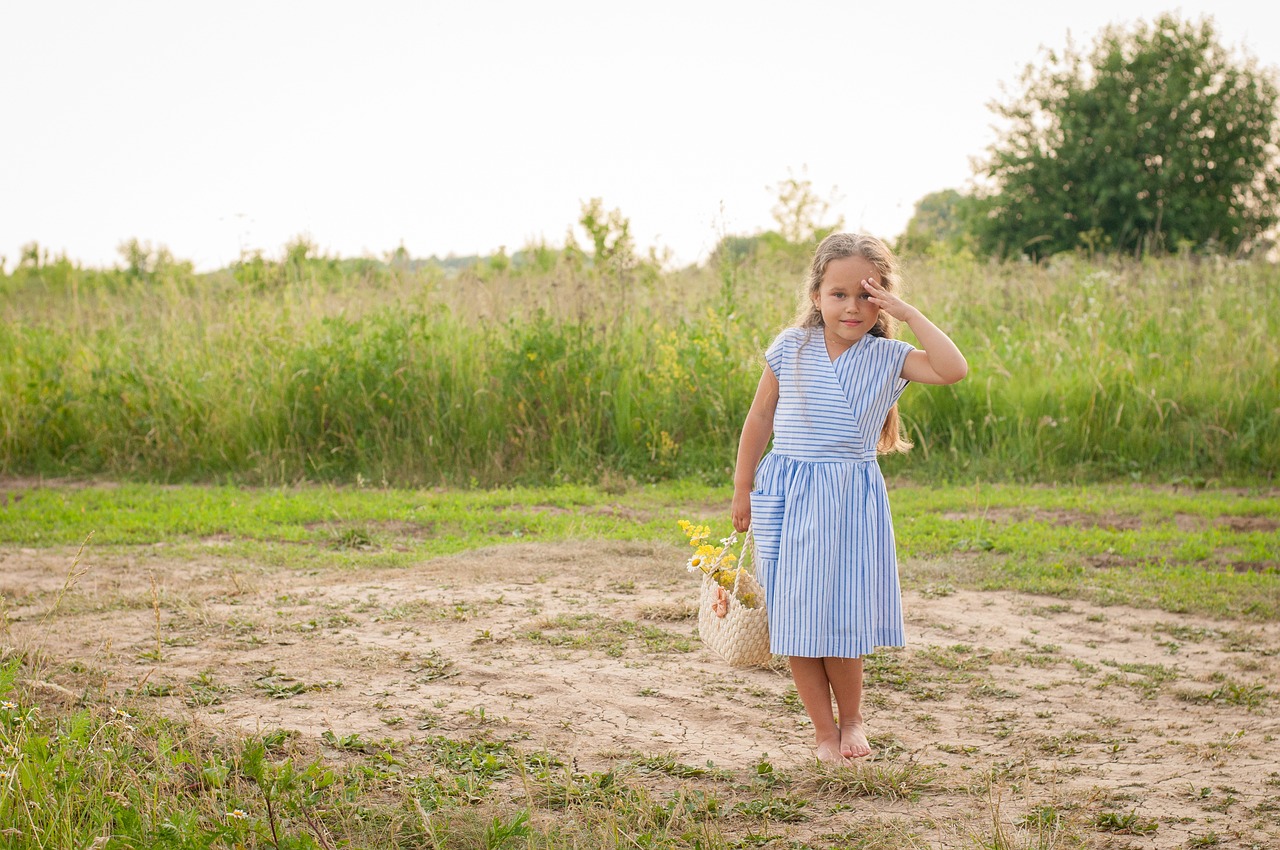This article delves into the popular phrase from the children’s show Paw Patrol, helping parents explain its meaning and significance to their children in an engaging way. This phrase encapsulates the essence of teamwork, determination, and the idea that everyone has a role to play in overcoming challenges.
Understanding the Phrase
The phrase ‘No Job is Too Big, No Pup is Too Small’ emphasizes that every task, no matter how daunting, can be accomplished with the right mindset and teamwork. It teaches children that they can tackle challenges together, and that even the smallest contributions can lead to significant outcomes. This understanding is crucial as children navigate various social and academic situations.
The Importance of Teamwork
Teamwork is vital in many aspects of life, from school projects to sports teams. The phrase encourages children to collaborate with others to achieve common goals. By working together, children learn to appreciate diverse skills and perspectives, fostering a sense of community.
- Building Social Skills: Engaging in teamwork helps children develop essential social skills, such as communication and empathy. These skills are foundational for successful interactions throughout life.
- Encouraging Cooperation: The phrase fosters a spirit of helping and supporting one another, teaching children the value of cooperation in achieving shared objectives.
- Learning to Share Responsibilities: Children can learn to divide tasks among peers, which is crucial for effective teamwork. This practice instills a sense of accountability and trust.
Problem-Solving Skills
Problem-solving is a critical skill for children. The phrase inspires kids to think creatively when faced with challenges. By working together, they can brainstorm solutions and learn to approach problems from different angles.
Applying the Phrase in Daily Life
Parents can incorporate this phrase into everyday situations to reinforce its message. Here are some practical examples:
- Involving Kids in Household Tasks: Engaging children in household chores teaches responsibility and the importance of teamwork. Age-appropriate tasks can include setting the table or sorting laundry.
- Encouraging Group Activities: Group activities, such as sports or collaborative projects, allow children to practice teamwork. These activities embody the spirit of the phrase while promoting physical and social skills.
The Role of Role Models
Role models play a significant part in children’s understanding of teamwork. Parents and caregivers can demonstrate the phrase through their actions, showing that collaboration is valuable in both personal and professional settings.
- Influence of Media and Characters: Characters from children’s shows often embody the values of teamwork and problem-solving. Paw Patrol serves as a great example, showcasing how teamwork leads to successful outcomes.
- Real-Life Examples of Teamwork: Sharing real-life stories of teamwork can inspire kids. Discussing how communities come together during challenges can help children relate to the phrase more personally.
Encouraging a Positive Mindset
A positive mindset is essential for success. The phrase promotes resilience and optimism in children, helping them to face challenges with a can-do attitude.
- Overcoming Challenges Together: Facing challenges is easier with support. The phrase encourages kids to seek help and work together in tough situations, reinforcing the idea that they are not alone.
- Celebrating Achievements: Recognizing collective efforts boosts morale. Celebrating teamwork achievements inspires continued cooperation and motivation among children.
By understanding and applying the phrase ‘No Job is Too Big, No Pup is Too Small,’ children can develop essential life skills that will serve them well in the future. This message, rooted in teamwork and positivity, can guide them through various challenges they may encounter.
Paw Patrol,
Explaining ‘No Job is Too Big, No Pup is Too Small’ to Kids
This article explores the popular phrase from the children’s show Paw Patrol, helping parents explain its meaning and significance to their children in an engaging way.
Understanding the Phrase
The phrase No Job is Too Big, No Pup is Too Small emphasizes the importance of teamwork and problem-solving. It teaches children that no challenge is insurmountable when working together. This motto encourages kids to approach tasks with a positive attitude and a willingness to collaborate.
The Importance of Teamwork
Teamwork is vital in many aspects of life. The phrase encourages children to collaborate with others to achieve common goals. Here are some key benefits:
- Building Social Skills: Engaging in teamwork helps children develop essential social skills. They learn to communicate effectively and understand different perspectives.
- Encouraging Cooperation: Cooperation is a key element of teamwork. The phrase fosters a spirit of helping and supporting one another.
- Learning to Share Responsibilities: Sharing responsibilities is crucial for effective teamwork. Children can learn to divide tasks among peers, promoting fairness and accountability.
Problem-Solving Skills
Problem-solving is a critical skill for children. The phrase inspires kids to think creatively when faced with challenges. It encourages them to explore different solutions and work together to find the best one.
Applying the Phrase in Daily Life
Parents can incorporate the phrase into everyday situations to reinforce its message:
- Involving Kids in Household Tasks: Involving children in household chores teaches responsibility. Age-appropriate tasks can promote teamwork and make chores fun.
- Encouraging Group Activities: Group activities, such as sports or projects, allow children to practice teamwork. These activities embody the phrase’s spirit and help kids learn the value of collaboration.
The Role of Role Models
Role models play a significant part in children’s understanding. Parents and caregivers can demonstrate the phrase through their actions:
- Influence of Media and Characters: Media characters often embody the phrase’s values. Shows like Paw Patrol model teamwork and problem-solving, making it relatable for kids.
- Real-Life Examples of Teamwork: Sharing real-life stories of teamwork can inspire kids. Discussing how collaboration leads to success helps children relate to the phrase more personally.
Encouraging a Positive Mindset
A positive mindset is essential for success. The phrase promotes resilience and optimism in children:
- Overcoming Challenges Together: Facing challenges is easier with support. The phrase encourages kids to seek help and work together in tough situations.
- Celebrating Achievements: Celebrating teamwork achievements boosts morale. Recognizing collective efforts can inspire continued cooperation and motivation.
In summary, the phrase No Job is Too Big, No Pup is Too Small encapsulates valuable lessons about teamwork, problem-solving, and collaboration. By integrating this message into daily life, parents can help children develop essential skills that will serve them well in the future.
helping parents explain its meaning and significance to their children in an engaging way.
Explaining ‘No Job is Too Big, No Pup is Too Small’ to Kids
This article explores the popular phrase from the children’s show Paw Patrol, helping parents explain its meaning and significance to their children in an engaging way.
Understanding the Phrase
The phrase No Job is Too Big, No Pup is Too Small emphasizes the importance of teamwork and problem-solving. It conveys that every task, no matter how large or small, is manageable when individuals work together. This message encourages children to understand that they can contribute to solutions, no matter their size or ability.
The Importance of Teamwork
Teamwork is vital in many aspects of life. This phrase encourages children to collaborate with others to achieve common goals. Working together not only fosters a sense of community but also teaches children the value of shared responsibilities.
- Building Social Skills: Engaging in teamwork helps children develop essential social skills. They learn to communicate effectively and understand the perspectives of others.
- Encouraging Cooperation: Cooperation is a key element of teamwork. The phrase fosters a spirit of helping and supporting one another, which is crucial in both play and learning environments.
- Learning to Share Responsibilities: Sharing responsibilities is crucial for effective teamwork. Children can learn how to divide tasks among peers, promoting fairness and collaboration.
Problem-Solving Skills
Problem-solving is a critical skill for children. The phrase inspires kids to think creatively when faced with challenges, encouraging them to seek solutions together rather than individually.
Applying the Phrase in Daily Life
Parents can incorporate this phrase into everyday situations to reinforce its message. Here are some practical examples:
- Involving Kids in Household Tasks: Involving children in household chores teaches responsibility. Age-appropriate tasks can promote teamwork and allow children to feel valued.
- Encouraging Group Activities: Group activities, such as sports or projects, allow children to practice teamwork. These activities embody the spirit of the phrase, providing real-life applications.
The Role of Role Models
Role models play a significant part in children’s understanding. Parents and caregivers can demonstrate the phrase through their actions, showing how teamwork leads to success.
- Influence of Media and Characters: Media characters often embody the phrase’s values. Shows like Paw Patrol model teamwork and problem-solving, making it relatable for children.
- Real-Life Examples of Teamwork: Sharing real-life stories of teamwork can inspire kids. Discussing examples from everyday life helps children relate to the phrase more personally.
Encouraging a Positive Mindset
A positive mindset is essential for success. The phrase promotes resilience and optimism in children, encouraging them to embrace challenges with a can-do attitude.
- Overcoming Challenges Together: Facing challenges is easier with support. The phrase encourages kids to seek help and work together in tough situations, reinforcing the idea that they are not alone.
- Celebrating Achievements: Celebrating teamwork achievements boosts morale. Recognizing collective efforts inspires continued cooperation and motivation among children.
By using the phrase No Job is Too Big, No Pup is Too Small, parents can instill valuable lessons in teamwork, problem-solving, and positivity in their children. This not only enhances their social skills but also prepares them for future challenges.
Understanding the Phrase
The phrase “No Job is Too Big, No Pup is Too Small” from the beloved children’s show Paw Patrol serves as a powerful reminder of the importance of teamwork and problem-solving in children’s lives. This section will delve into the meaning of this phrase, emphasizing how it can positively influence young minds by fostering collaboration and creative thinking.
At its core, this phrase encapsulates the idea that every challenge, regardless of its size, can be tackled with the right attitude and teamwork. It teaches children that they are capable of overcoming obstacles, no matter how daunting they may seem. By breaking down the phrase, we can help kids understand that everyone has a role to play in achieving success, and that no contribution is too small.
- Empowerment: The phrase empowers children by instilling a sense of confidence. They learn that their efforts, no matter how minor, are valuable and can lead to significant outcomes.
- Collaboration: It emphasizes the importance of working together. Children discover that combining their strengths with others can lead to innovative solutions and a sense of community.
- Problem-Solving: The phrase encourages kids to approach problems with a creative mindset. They learn to think outside the box and consider various perspectives when faced with challenges.
Moreover, the phrase serves as a practical tool for parents and educators to discuss the significance of teamwork in everyday scenarios. For instance, when children work on group projects, they can recall this phrase to remind themselves that each member’s contribution is crucial. This not only enhances their understanding of teamwork but also helps them develop essential social skills.
In addition, children can relate the phrase to their personal experiences, whether it’s in sports, group activities, or even family chores. By applying the message of the phrase in these contexts, children learn to appreciate the value of collaboration and support.
Furthermore, the phrase acts as a catalyst for discussions around cooperation and responsibility. Parents can encourage their children to take on specific roles during team activities, reinforcing the idea that everyone has a part to play. This helps children understand the importance of sharing responsibilities and working harmoniously with others.
In essence, “No Job is Too Big, No Pup is Too Small” is more than just a catchy phrase; it is a life lesson that resonates deeply with children. By understanding its meaning, they are better equipped to navigate challenges, collaborate with peers, and embrace their unique contributions to any team effort.
Ultimately, this phrase serves as a valuable reminder for children that, with teamwork and determination, they can accomplish great things together. By instilling this mindset early on, we prepare them for a future where they approach challenges with confidence, creativity, and a collaborative spirit.
The Importance of Teamwork
Teamwork is an essential skill that plays a crucial role in various aspects of life, from school projects to family activities and even future careers. The phrase “No Job is Too Big, No Pup is Too Small” from the beloved children’s show Paw Patrol encapsulates the spirit of collaboration and unity. This section delves into how this phrase encourages children to work together, fostering a sense of community and shared responsibility.
- Fostering Collaboration: At its core, teamwork is about collaboration. When children learn to work together, they understand that each member brings unique skills to the table. This realization not only enhances their problem-solving abilities but also teaches them to appreciate different perspectives. For instance, during group assignments, children can learn how to combine their strengths to produce better outcomes.
- Building Trust and Respect: Working in teams helps children build trust and respect for one another. As they collaborate, they learn to rely on their peers, which fosters a supportive environment. This trust is critical, as it allows children to express their ideas without fear of judgment, thereby encouraging creativity and innovation.
- Enhancing Communication Skills: Effective communication is a vital component of teamwork. Children who engage in collaborative activities learn how to articulate their thoughts clearly and listen actively to others. This skill is particularly important in today’s world, where communication often takes many forms, from verbal to digital.
- Encouraging Empathy: Teamwork encourages children to develop empathy. When they work together, they are exposed to the feelings and challenges faced by their peers. This exposure helps them understand the importance of supporting one another, which is essential for building strong relationships both in childhood and later in life.
Learning to Share Responsibilities
Sharing responsibilities is another critical aspect of effective teamwork. Children can learn how to divide tasks among themselves, which not only makes the workload lighter but also instills a sense of accountability. For example, during a school project, assigning roles such as researcher, presenter, or designer allows each child to contribute meaningfully while learning the importance of relying on others.
Problem-Solving Skills
Teamwork naturally encourages children to engage in problem-solving. When faced with challenges, they can brainstorm solutions together, combining their ideas to overcome obstacles. This collaborative approach not only enhances their critical thinking skills but also teaches them that there are often multiple ways to tackle a problem.
Applying Teamwork in Everyday Life
Parents can encourage teamwork by involving their children in household tasks and group activities. Simple chores, like setting the table or organizing toys, can be turned into a fun team effort. Likewise, participating in group sports or community projects can provide children with practical experiences that reinforce the values of teamwork and collaboration.
Conclusion
In summary, teamwork is an invaluable skill that children need to cultivate. By embracing the principles of collaboration, communication, and shared responsibility, they can develop not only as individuals but also as members of a community. The phrase “No Job is Too Big, No Pup is Too Small” serves as a powerful reminder of the importance of working together to achieve common goals, setting the foundation for a lifetime of cooperative engagement.

Building Social Skills
is a crucial aspect of childhood development, and engaging in teamwork plays a significant role in this process. When children collaborate with others, they learn to navigate social interactions, which are essential for their emotional and cognitive growth. This section delves into the various ways teamwork contributes to the development of these vital skills.
First and foremost, teamwork fosters effective communication. Children learn to express their thoughts and ideas clearly while also listening to their peers. This back-and-forth exchange is essential for developing verbal skills and understanding non-verbal cues, which are critical components of social interactions. For instance, during group activities, kids must articulate their opinions, negotiate roles, and provide feedback, all of which enhance their ability to communicate in diverse situations.
Moreover, teamwork encourages empathy and understanding. When children work together towards a common goal, they are exposed to different perspectives and experiences. This exposure helps them to appreciate the feelings and viewpoints of others, fostering a sense of compassion and consideration. As they collaborate, they learn to celebrate each other’s strengths and support one another through challenges, which strengthens their social bonds.
Another key benefit of teamwork is the opportunity for children to develop conflict resolution skills. Disagreements are natural in any group setting, and learning how to handle conflicts constructively is an invaluable skill. Children who engage in teamwork often find themselves in situations where they must negotiate solutions, compromise, or apologize. These experiences teach them how to navigate disagreements and emerge with stronger relationships, which is a vital skill for their future interactions.
Additionally, participating in team activities builds a sense of belonging. When children are part of a team, they feel included and valued, which boosts their self-esteem and confidence. This sense of belonging is particularly important during the formative years, as it helps children establish their identity and understand their role within a group. Feeling part of a team can lead to increased motivation and a desire to contribute positively to group efforts.
Furthermore, teamwork promotes leadership skills. As children collaborate, they may take on different roles, including leadership positions. This experience allows them to practice decision-making, responsibility, and accountability. Whether they are leading a project or supporting a peer, these experiences help them develop the qualities of a good leader, which can be beneficial in various aspects of life.
Engaging in teamwork also enhances problem-solving abilities. When children work together, they often encounter challenges that require collective brainstorming and innovative thinking. This collaborative approach not only leads to effective solutions but also encourages creativity and critical thinking. Children learn to assess situations, evaluate options, and implement strategies, skills that are essential for their academic and personal lives.
In summary, building social skills through teamwork is an enriching experience for children. It equips them with essential communication, empathy, conflict resolution, and leadership skills while fostering a sense of belonging and enhancing problem-solving abilities. By encouraging children to engage in teamwork, parents and educators can help them develop the social competencies necessary for successful interactions throughout their lives.

Encouraging Cooperation
is essential in fostering a collaborative environment, especially among children. The phrase “No Job is Too Big, No Pup is Too Small” from the beloved children’s show Paw Patrol serves as a powerful reminder of the importance of teamwork and mutual support. This section delves into how this phrase cultivates a spirit of cooperation and the benefits it brings to young minds.
Cooperation is more than just working together; it embodies the idea of helping and supporting one another. When children understand that each member of a team has unique strengths, they learn to appreciate the value of collective effort. This realization helps them to build strong, lasting relationships with their peers. By encouraging cooperation, children become more empathetic, learning to consider the feelings and perspectives of others.
| Benefits of Cooperation | Description |
|---|---|
| Enhanced Communication | Working together requires clear and effective communication, which helps children articulate their thoughts and listen to others. |
| Conflict Resolution | Cooperation teaches children how to resolve disagreements amicably, fostering a peaceful environment. |
| Increased Confidence | When children collaborate successfully, they gain confidence in their abilities and the value of teamwork. |
| Sense of Belonging | Being part of a team helps children feel connected and valued, which is crucial for their emotional development. |
To actively encourage cooperation, parents and educators can create opportunities for children to work together on various projects. Group activities, such as team sports, art projects, or community service, allow children to practice cooperation in a fun and engaging way. These experiences not only reinforce the message of the phrase but also help children develop critical social skills.
- Team Sports: Engaging in sports teaches children to rely on one another, promoting a sense of unity.
- Collaborative Projects: Working on school projects in pairs or small groups encourages sharing ideas and responsibilities.
- Community Service: Participating in community service fosters a sense of purpose and teamwork, showing children the impact of collective efforts.
Moreover, it is crucial to model cooperative behavior as adults. When children see their parents and caregivers working together, they are more likely to emulate that behavior. Sharing responsibilities at home, whether it’s cooking dinner or organizing a family event, can demonstrate the importance of cooperation in everyday life.
In conclusion, fostering a spirit of cooperation among children is vital for their social and emotional development. By embracing the message of “No Job is Too Big, No Pup is Too Small”, parents and educators can help children understand the significance of teamwork. As they learn to support one another, children not only enhance their social skills but also build a foundation for successful collaboration in the future.
Learning to Share Responsibilities
In today’s fast-paced world, the ability to work effectively within a team is more important than ever. is a fundamental skill that children can develop early on, setting the stage for their future success in school, work, and life. This section explores various strategies to help children understand the value of dividing tasks among peers and working collaboratively.
To begin with, it is essential for children to grasp the concept of task division. By breaking down larger projects into smaller, manageable tasks, children can see the benefits of teamwork in action. For instance, when organizing a school event, one child might handle decorations while another manages invitations. This not only teaches children to recognize their strengths but also encourages them to rely on one another.
- Group Projects: Assigning group projects in the classroom can provide excellent opportunities for children to practice sharing responsibilities. Encourage them to discuss and decide who will take on each part of the project.
- Sports Teams: Participation in team sports teaches children the importance of working together towards a common goal, highlighting how every player has a unique role to play.
- Household Chores: Involving children in household tasks can be a practical way to teach them about responsibility. Assign age-appropriate chores and encourage them to work together to complete them efficiently.
Effective communication is vital in any team setting. Children must learn to express their ideas clearly and listen to their peers. This can be fostered through:
- Group Discussions: Encourage children to share their thoughts and opinions during group activities. This not only builds their confidence but also enhances their ability to cooperate with others.
- Feedback Sessions: After completing a group task, facilitate a feedback session where children can discuss what worked well and what could be improved. This practice promotes a growth mindset and reinforces the importance of teamwork.
When children learn to share responsibilities, they also develop empathy towards their peers. Understanding that everyone has unique strengths and weaknesses fosters a supportive environment. Parents and educators can:
- Model Empathy: Demonstrating empathy in everyday situations can inspire children to do the same. Discussing feelings and encouraging them to help classmates can instill a sense of community.
- Celebrate Team Success: Acknowledging collective achievements reinforces the idea that working together leads to success. Celebrating small victories can motivate children to continue collaborating.
To solidify the concept of sharing responsibilities, it is beneficial to provide real-life examples that children can relate to. Stories of famous teams, whether in sports, business, or community service, can illustrate how successful collaboration leads to significant outcomes. Engaging children in discussions about these examples can inspire them to emulate similar teamwork in their own lives.
Ultimately, learning to share responsibilities is a vital component of effective teamwork. By providing children with opportunities to practice this skill, we equip them with the tools they need to navigate collaborative environments throughout their lives. As they grow, the ability to work well with others will serve them in countless ways, from academic success to personal relationships.
Problem-Solving Skills
are essential for children as they navigate through various challenges in their daily lives. The phrase “No Job is Too Big, No Pup is Too Small” from the beloved show Paw Patrol serves as a powerful reminder that with teamwork and creativity, any problem can be tackled effectively. This section delves into how this phrase can inspire kids to think outside the box when confronted with obstacles.
When children encounter difficulties, it is crucial for them to develop a mindset that encourages creative thinking. The phrase suggests that no challenge is insurmountable if approached with the right attitude and collaboration. By instilling this belief, parents can help their children understand that challenges are opportunities for growth and learning.
- Encouraging Critical Thinking: Engaging with problems requires children to analyze situations, consider various solutions, and make decisions. This process enhances their critical thinking abilities.
- Promoting Resilience: When children face setbacks, the phrase reminds them that perseverance is key. They learn to bounce back from failures and keep trying until they find a solution.
- Fostering Innovation: Creativity often flourishes in collaborative settings. By working with peers, children can brainstorm unique solutions that they might not have considered alone.
Incorporating the phrase into everyday life can further reinforce these skills. For instance, during family discussions about household problems, parents can encourage children to contribute ideas, emphasizing that every suggestion is valuable. This approach not only boosts their confidence but also teaches them the importance of teamwork.
Moreover, engaging children in group activities, such as team sports or collaborative projects, allows them to practice problem-solving in real-time. They learn to communicate effectively, share ideas, and divide tasks based on each member’s strengths. Such experiences are vital for developing a sense of responsibility and accountability.
Additionally, role models play a significant role in shaping children’s understanding of problem-solving. Parents and caregivers can demonstrate effective problem-solving strategies in their own lives, showcasing the value of teamwork and creativity. Sharing stories of famous problem-solvers, whether from history or current events, can also inspire children to emulate these traits.
Furthermore, media characters, like those from Paw Patrol, exemplify teamwork and innovative thinking. By discussing these characters’ adventures, parents can highlight the importance of collaboration and creative problem-solving in a fun and relatable way.
Ultimately, fostering problem-solving skills in children enhances their ability to tackle challenges throughout their lives. By embracing the spirit of “No Job is Too Big, No Pup is Too Small,” children learn that they are capable of overcoming obstacles, especially when they work together and think creatively. This mindset not only prepares them for future challenges but also instills a sense of confidence and resilience that will serve them well in all aspects of life.
Applying the Phrase in Daily Life
The phrase “No job is too big, no pup is too small” from the popular children’s show Paw Patrol serves as a fantastic reminder of the power of teamwork and collaboration. Parents can effectively use this phrase in daily life to teach their children valuable lessons about responsibility, cooperation, and problem-solving. Below are practical examples of how to incorporate this phrase into everyday situations.
One of the most effective ways to reinforce the message is through daily routines. When parents involve their children in household tasks, they can emphasize the idea that every contribution counts, no matter how small. For instance:
- Chores Together: Assign age-appropriate chores, such as dusting or sorting laundry. As you work side by side, remind them that every job matters, and teamwork makes the tasks easier and more fun.
- Meal Preparation: Involve your kids in cooking meals. Whether it’s washing vegetables or setting the table, highlight how their participation helps the entire family.
Group activities are another excellent avenue for applying this phrase. When children engage in team sports or collaborative projects, they learn to appreciate the value of working together. Here are some ideas:
- Sports Teams: Encourage your children to join a sports team where they can learn to depend on each other. Discuss how each player, regardless of their skill level, contributes to the team’s success.
- School Projects: Promote involvement in group assignments. Remind them that everyone’s ideas are important and that collaboration leads to better outcomes.
Community service is a fantastic way to apply the phrase while teaching children about empathy and support. Participating in local events or volunteering can be eye-opening experiences:
- Community Clean-Up Days: Organize a family outing to clean up a local park. Discuss how, together, they can make a big difference in their community.
- Food Drives: Involve children in collecting food for those in need. Highlight the importance of each donation, reinforcing that no contribution is too small.
Another effective method is through storytelling. Sharing stories—whether from books, movies, or personal experiences—that exemplify teamwork can help children understand the importance of the phrase:
- Books and Films: Choose stories that showcase characters working together to overcome challenges. Discuss the lessons learned and how they relate to the phrase.
- Personal Experiences: Share your own experiences where teamwork made a difference. Relate those stories back to the phrase, emphasizing how collaboration leads to success.
By integrating the phrase “No job is too big, no pup is too small” into daily life, parents can instill essential values of teamwork, responsibility, and problem-solving in their children. These practical examples not only reinforce the message but also create lasting memories and teach children the importance of supporting one another in all aspects of life.
Involving Kids in Household Tasks
Involving children in household tasks is not just about getting chores done; it is an essential part of their development. By assigning age-appropriate chores, parents can teach their children valuable lessons about responsibility, teamwork, and the importance of contributing to the family unit.
Age-Appropriate Tasks for Kids
When considering which chores to assign, it’s crucial to tailor tasks to the child’s age and abilities. Here are some suggestions:
- Toddlers (Ages 2-4): Simple tasks such as putting away toys, sorting laundry by color, or wiping spills with a damp cloth can be great starting points.
- Preschoolers (Ages 4-5): At this age, children can help with feeding pets, setting the table, or sorting utensils. These tasks help them understand routine and responsibility.
- Early Elementary (Ages 6-8): Children can take on more complex chores like making their beds, helping with meal preparation, and dusting surfaces. This age group can also learn to follow simple recipes.
- Older Children (Ages 9-12): Pre-teens can tackle tasks such as vacuuming, doing laundry, and even grocery shopping with a parent. They can also be involved in planning meals.
- Teenagers (Ages 13+): Teenagers should be encouraged to manage their own schedules, which includes keeping their rooms tidy, cooking meals, and taking care of their personal laundry.
Promoting Teamwork Through Chores
Involving children in household tasks not only teaches them responsibility but also fosters teamwork. When parents and children work together on chores, it creates a sense of unity and shared purpose. Here are some ways to promote teamwork:
- Family Chore Days: Designate a day each week where the family comes together to tackle household tasks. This can include cleaning, gardening, or organizing spaces.
- Chore Charts: Create a visual chore chart that lists tasks and allows children to check them off as they complete them. This not only motivates them but also instills a sense of accomplishment.
- Group Projects: Engage in larger projects, such as redecorating a room or planning a family event. This teaches children how to collaborate and communicate effectively.
Benefits of Involving Kids in Household Tasks
There are numerous benefits to involving children in household chores:
- Building Life Skills: Children learn essential life skills, including time management, organization, and basic cooking and cleaning techniques.
- Boosting Confidence: Completing tasks successfully can enhance a child’s self-esteem and confidence in their abilities.
- Encouraging Independence: As children learn to take on responsibilities, they become more independent and self-reliant.
In conclusion, involving children in household tasks is a powerful way to teach them about responsibility and teamwork. By assigning age-appropriate chores and promoting collaboration, parents can help their children develop the skills they need to thrive both at home and in the wider world.

Encouraging Group Activities
Encouraging group activities is essential for children’s development, as it provides them with opportunities to practice and enhance their teamwork skills. This section delves into various group activities that embody the spirit of collaboration and cooperation, emphasizing their importance in fostering social and emotional growth among children.
Benefits of Group Activities
- Enhanced Communication Skills: Participating in group activities helps children learn how to express their ideas clearly and listen to others. This exchange fosters effective communication, which is vital for teamwork.
- Building Trust: Working together allows children to develop trust in their peers. They learn to rely on one another, which strengthens their bonds and encourages a supportive environment.
- Conflict Resolution: Group activities often present challenges that require negotiation and compromise. Children gain valuable experience in resolving conflicts, which is a crucial skill for their future interactions.
Types of Group Activities
| Activity Type | Description | Teamwork Skills Developed |
|---|---|---|
| Sports | Team sports like soccer or basketball encourage collaboration and strategy. | Communication, trust, and strategic thinking. |
| Group Projects | Collaborative projects in school foster creativity and shared responsibility. | Problem-solving, task delegation, and creativity. |
| Arts and Crafts | Working on art projects together allows for creative expression and teamwork. | Creativity, sharing resources, and constructive feedback. |
How to Encourage Participation
- Introduce Fun Activities: Make group activities enjoyable and engaging. This could include games, sports, or creative projects that spark interest.
- Set Clear Goals: Help children understand the objectives of the activity. Setting clear goals can motivate them to work together towards a common purpose.
- Celebrate Achievements: Recognize and celebrate the successes of the group, no matter how small. This reinforces the value of teamwork and encourages continued participation.
Conclusion
Incorporating group activities into children’s lives is a powerful way to promote teamwork and essential life skills. By engaging in sports, collaborative projects, or creative endeavors, children not only have fun but also learn to work together effectively. These experiences will serve them well as they navigate their social environments and face future challenges.
The Role of Role Models
Role models play a crucial role in shaping children’s understanding of the world around them. They are the individuals whom children look up to, whether they are parents, caregivers, or influential figures from media. This section delves into how parents and caregivers can effectively demonstrate the essence of the phrase “No job is too big, no pup is too small” through their actions, thereby instilling important values in their children.
Children learn primarily through observation. When parents and caregivers actively embody the principles of teamwork and problem-solving, they set a powerful example. For instance, engaging in community service or collaborating on family projects illustrates the importance of working together to achieve common goals. By participating in activities that require cooperation, children can see firsthand that no task is too daunting when approached as a team.
Effective communication is a cornerstone of teamwork. Parents can model this by encouraging open dialogues within the family. Discussing daily challenges and brainstorming solutions together not only fosters a supportive environment but also teaches children to value diverse perspectives. When children see their parents actively listening and considering others’ opinions, they learn the importance of collaboration and respect.
It’s essential for role models to set realistic expectations for themselves and their children. By demonstrating that challenges can be met with perseverance and creativity, parents can instill a sense of resilience in their children. Celebrating small victories along the way reinforces the idea that every contribution, no matter how small, is valuable in the larger context of teamwork.
- Family Chores: Assigning age-appropriate tasks to children during household chores encourages a sense of responsibility and teamwork.
- Group Activities: Engaging in sports or group projects allows children to practice collaboration and develop essential social skills.
- Community Involvement: Participating in community events as a family can demonstrate the importance of working together for a common cause.
Children’s media often presents characters that embody teamwork and problem-solving, such as those in Paw Patrol. These characters serve as relatable role models, showcasing the values of cooperation and determination. Parents can use these examples to spark conversations about how teamwork can be applied in real life, making the lessons more tangible for children.
Real-life examples of teamwork can inspire children significantly. Parents can share their own experiences of overcoming challenges with the help of others. Whether it’s a work project or a personal endeavor, these stories illustrate that collaboration is not only beneficial but often necessary for success. This personal touch can resonate deeply with children, making the concept of teamwork more relatable.
Role models should foster a growth mindset in children, emphasizing that challenges are opportunities for learning and growth. When parents demonstrate resilience in the face of difficulties, they teach children that it’s okay to fail and that perseverance is key. This perspective encourages children to approach problems with a positive attitude and a willingness to collaborate with others.
In conclusion, the role of parents and caregivers as role models is vital in helping children understand and embrace the values of teamwork and problem-solving. By demonstrating these principles through their actions, encouraging open communication, and sharing personal experiences, they can effectively instill these important lessons in their children. Ultimately, when children witness these values in action, they are more likely to internalize them and apply them in their own lives.
Influence of Media and Characters
The influence of media and characters on children’s understanding of teamwork and problem-solving is profound. Shows like Paw Patrol serve as excellent examples of how animated characters can embody important values, encouraging young viewers to embrace collaboration and resilience in their daily lives.
Children are highly impressionable, and the media they consume plays a significant role in shaping their values and beliefs. Characters in children’s shows often demonstrate teamwork, friendship, and problem-solving skills, which can resonate with young audiences. For instance, in Paw Patrol, each character has unique skills, and they work together to solve problems, teaching children that everyone has something valuable to contribute.
- Bravery: Characters like Ryder and his team face challenges head-on, showcasing courage.
- Empathy: The pups often help others in need, instilling a sense of compassion in young viewers.
- Responsibility: Each character takes their role seriously, highlighting the importance of accountability.
These traits not only entertain but also serve as important lessons for children. When kids see their favorite characters overcoming obstacles together, they are more likely to emulate these behaviors in their own lives.
Parents can leverage the influence of media characters to teach valuable life lessons. For example, after watching an episode of Paw Patrol, parents can engage their children in discussions about teamwork. Questions like, “How did the pups solve their problem?” or “What would you do if you were in their situation?” can prompt critical thinking and reinforce the show’s messages.
Encouraging children to apply lessons learned from media characters in real-life situations can enhance their understanding of teamwork. Parents can create opportunities for children to work together with peers on projects, sports, or community service. These experiences allow children to practice collaboration and communication, mirroring the teamwork they see in their favorite shows.
While media characters can significantly influence children’s values, parental guidance is essential. Parents should watch these shows alongside their children to facilitate discussions about the actions and choices of characters. This shared viewing experience can help children process what they see and relate it to their own lives.
It’s crucial for parents to encourage children to think critically about the media they consume. Discussing the outcomes of various scenarios in shows like Paw Patrol can lead to deeper conversations about ethical decision-making and the importance of teamwork. Questions such as, “What could the pups have done differently?” can inspire children to think about alternative solutions and the impact of their choices.
In summary, media characters play a vital role in shaping children’s understanding of teamwork and problem-solving. Through engaging narratives and relatable situations, shows like Paw Patrol not only entertain but also educate. By actively participating in discussions and applying these lessons in real life, parents can help their children internalize the values of teamwork and collaboration, preparing them for future challenges.
Paw Patrol
Explaining ‘No Job is Too Big, No Pup is Too Small’ to Kids
This article explores the popular phrase from the children’s show , helping parents explain its meaning and significance to their children in an engaging way.
Understanding the Phrase
The phrase “No Job is Too Big, No Pup is Too Small” emphasizes the importance of teamwork and problem-solving. It teaches children that everyone has a role to play, regardless of their size or abilities. This concept is crucial in children’s lives, as it fosters a sense of belonging and encourages collaboration.
The Importance of Teamwork
Teamwork is vital in many aspects of life. The phrase encourages children to work together to achieve common goals. By understanding that they can rely on each other, kids learn the value of cooperation.
- Building Social Skills: Engaging in teamwork helps children develop essential social skills. Working together teaches them how to communicate effectively and resolve conflicts.
- Encouraging Cooperation: Cooperation is a key element of teamwork. The phrase fosters a spirit of helping and supporting one another, which is essential for personal growth.
- Learning to Share Responsibilities: Sharing responsibilities is crucial for effective teamwork. Children can learn to divide tasks among peers, promoting a sense of accountability.
Problem-Solving Skills
Problem-solving is a critical skill for children. The phrase inspires kids to think creatively when faced with challenges. They learn that working together can lead to innovative solutions.
Applying the Phrase in Daily Life
Parents can incorporate the phrase into everyday situations to reinforce its message:
- Involving Kids in Household Tasks: Involving children in household chores teaches responsibility. Age-appropriate tasks can promote teamwork and make chores fun.
- Encouraging Group Activities: Group activities, such as sports or projects, allow children to practice teamwork. Engaging in these activities embodies the phrase’s spirit.
The Role of Role Models
Role models play a significant part in children’s understanding. Parents and caregivers can demonstrate the phrase through their actions, showing how teamwork leads to success.
- Influence of Media and Characters: Media characters often embody the phrase’s values. Shows like model teamwork and problem-solving, making it relatable for kids.
- Real-Life Examples of Teamwork: Sharing real-life stories of teamwork can inspire kids. Discussing examples helps children relate to the phrase on a personal level.
Encouraging a Positive Mindset
A positive mindset is essential for success. The phrase promotes resilience and optimism in children, encouraging them to face challenges with a can-do attitude.
- Overcoming Challenges Together: Facing challenges is easier with support. The phrase encourages kids to seek help and work together in tough situations, reinforcing the idea that they are not alone.
- Celebrating Achievements: Celebrating teamwork achievements boosts morale. Recognizing collective efforts can inspire continued cooperation and motivation among peers.
In conclusion, the phrase “No Job is Too Big, No Pup is Too Small” serves as a powerful tool for teaching children about teamwork, problem-solving, and the importance of supporting one another. By incorporating this message into daily life, parents can help their children develop essential skills that will benefit them throughout their lives.
model teamwork and problem-solving.
Explaining ‘No Job is Too Big, No Pup is Too Small’ to Kids
This article explores the popular phrase from the children’s show Paw Patrol, helping parents explain its meaning and significance to their children in an engaging way.
Understanding the Phrase
The phrase ‘No Job is Too Big, No Pup is Too Small’ emphasizes the importance of teamwork and problem-solving. It teaches children that every challenge can be tackled together, no matter how daunting it may seem. This concept is vital as it encourages kids to see the value in collaboration and support from others.
The Importance of Teamwork
Teamwork is essential in many aspects of life. It fosters a sense of community and belonging. The phrase encourages children to collaborate with others to achieve common goals, making them feel empowered.
- Building Social Skills: Engaging in teamwork helps children develop essential social skills. By working together, they learn to communicate effectively and resolve conflicts.
- Encouraging Cooperation: Cooperation is a key element of teamwork. This phrase fosters a spirit of helping and supporting one another, making tasks more enjoyable.
- Learning to Share Responsibilities: Sharing responsibilities is crucial for effective teamwork. Children can learn to divide tasks among peers, leading to a sense of ownership and accountability.
Problem-Solving Skills
Problem-solving is a critical skill for children. The phrase inspires kids to think creatively when faced with challenges. By working together, they can brainstorm solutions and support each other in overcoming obstacles.
Applying the Phrase in Daily Life
Parents can incorporate the phrase into everyday situations to reinforce its message. Here are some practical examples:
- Involving Kids in Household Tasks: Involving children in household chores teaches them responsibility. Age-appropriate tasks can promote teamwork, such as cooking a meal together or cleaning up after playtime.
- Encouraging Group Activities: Activities like sports or group projects allow children to practice teamwork. These experiences embody the phrase’s spirit, showing them the benefits of collaboration.
The Role of Role Models
Role models play a significant part in children’s understanding of teamwork. Parents and caregivers can demonstrate the phrase through their actions, showing how they work together with others.
- Influence of Media and Characters: Media characters often embody the phrase’s values. Shows like Paw Patrol model teamwork and problem-solving, making it relatable for kids.
- Real-Life Examples of Teamwork: Sharing real-life stories of teamwork can inspire kids. Discussing how friends or family members worked together can help children relate to the phrase on a personal level.
Encouraging a Positive Mindset
A positive mindset is essential for success. The phrase promotes resilience and optimism in children, teaching them that challenges can be overcome with the help of others.
- Overcoming Challenges Together: Facing challenges is easier with support. The phrase encourages kids to seek help and work together in tough situations, reinforcing the idea that they are not alone.
- Celebrating Achievements: Celebrating teamwork achievements boosts morale. Recognizing collective efforts can inspire continued cooperation and motivation among children.

Real-Life Examples of Teamwork
can profoundly impact children’s understanding of collaboration and problem-solving. By sharing stories that illustrate the essence of teamwork, we can help kids relate to the phrase “No Job is Too Big, No Pup is Too Small” on a personal level. Here, we explore how these stories can serve as powerful tools for teaching children the importance of working together.
When children hear about real-life teamwork, they can visualize how individuals come together to achieve a common goal. For instance, consider a local community project where neighbors banded together to clean up a park. This example demonstrates how people from different backgrounds can unite for a shared purpose. By discussing such stories, parents can encourage their kids to see teamwork as a vital part of their own lives.
- Sports Teams: Many children are involved in sports, where teamwork is crucial. Sharing stories of famous athletes who credit their success to their teammates can inspire kids. For example, discussing how a basketball player passes the ball to set up a winning shot can illustrate the importance of collaboration.
- School Projects: Group assignments in school provide excellent opportunities for teamwork. Parents can share anecdotes about successful group projects where students utilized each other’s strengths to complete a task, emphasizing the idea that everyone has a role to play.
- Charity Events: Highlighting stories where communities come together for charity drives or fundraising events can show children the impact of collective effort. For instance, discussing a bake sale organized by kids to raise funds for a local shelter can illustrate how teamwork can lead to positive change.
Additionally, sharing stories of historical figures who exemplified teamwork can be incredibly motivating. For example, the Apollo 11 mission is a remarkable story of how scientists, engineers, and astronauts worked in unison to achieve a monumental goal—landing on the moon. By discussing such examples, children can understand that large achievements often require the combined efforts of many.
Furthermore, incorporating teamwork stories from popular media, such as movies or books, can resonate well with children. For instance, in movies like “The Incredibles,” the family must work together to defeat villains, showcasing how each member’s unique abilities contribute to their success. These narratives can help children internalize the value of teamwork in a fun and relatable way.
Involving children in discussions about these stories can also enhance their understanding. Ask questions like, “What would happen if they didn’t work together?” or “How did their teamwork help them succeed?” Such inquiries can prompt children to think critically about the importance of collaboration and how they can apply these lessons in their own lives.
Ultimately, sharing real-life examples of teamwork not only helps children grasp the meaning of the phrase “No Job is Too Big, No Pup is Too Small” but also instills valuable life skills. By encouraging children to reflect on these stories, we can foster a deeper appreciation for teamwork, cooperation, and the joy of achieving goals together.
Encouraging a Positive Mindset
A positive mindset is essential for success. It serves as a foundation for resilience and optimism, particularly in children who are still developing their understanding of the world around them. By fostering this mindset, we equip children with the tools they need to face challenges head-on, encouraging them to view obstacles as opportunities for growth.
The phrase “No Job is Too Big, No Pup is Too Small” from the beloved children’s show Paw Patrol encapsulates this idea perfectly. It teaches children that with the right attitude and teamwork, they can tackle any challenge, no matter how daunting it may seem.
Resilience is the ability to bounce back from setbacks. When children adopt a positive mindset, they are more likely to approach difficulties with determination rather than despair. This mindset encourages them to ask for help when needed and to collaborate with others, thereby enhancing their problem-solving skills.
Optimism is another critical component of a positive mindset. Children who are taught to focus on the bright side of situations are more likely to develop a can-do attitude. They learn that failure is not the end but rather a stepping stone toward success. This belief can significantly impact their academic and social lives, leading to better outcomes in various areas.
- Model Positive Behavior: Children often emulate their parents. By demonstrating a positive outlook, adults can influence their children’s attitudes.
- Encourage Positive Self-Talk: Teach children to replace negative thoughts with positive affirmations. For instance, instead of saying, “I can’t do this,” encourage them to say, “I will try my best.”
- Celebrate Efforts, Not Just Achievements: Recognizing hard work, regardless of the outcome, helps children understand that effort is valuable.
A nurturing environment is crucial for developing a positive mindset. Parents and caregivers should create a space where children feel safe to express their feelings and challenges. Open discussions about emotions can help children process their experiences and build resilience.
The phrase “No Job is Too Big, No Pup is Too Small” also emphasizes the importance of teamwork. When children learn to work together, they not only share responsibilities but also support each other emotionally. This collaboration fosters a sense of belonging and community, which is vital for developing a positive mindset.
Children often look up to their parents, teachers, and media characters as role models. By showcasing positive attitudes and resilience in the face of challenges, these figures can inspire children. Shows like Paw Patrol provide relatable examples of teamwork and problem-solving, reinforcing the message that a positive mindset can lead to success.
In summary, fostering a positive mindset in children is essential for their overall development. By instilling resilience and optimism, teaching practical strategies, and encouraging teamwork, we can help them navigate life’s challenges effectively. The phrase “No Job is Too Big, No Pup is Too Small” serves as a powerful reminder that with the right mindset, anything is possible.
Overcoming Challenges Together
When children face challenges, the journey can often feel daunting. However, the phrase No Job is Too Big, No Pup is Too Small serves as a powerful reminder that support and collaboration can make overcoming obstacles much easier. This section delves into how this phrase encourages kids to seek help and work together during tough situations.
In the world of children, challenges can range from academic difficulties to social conflicts. By understanding that they are not alone in these struggles, kids can learn to reach out for support. This idea is crucial because it fosters a sense of community and belonging, allowing children to recognize that asking for help is a sign of strength, not weakness.
Working together with friends or family members can significantly alleviate the pressure of facing challenges alone. For instance, when tackling a difficult homework assignment, a child might feel overwhelmed. However, by collaborating with peers, they can share ideas and strategies, making the task more manageable and even enjoyable. This collaborative approach not only aids in problem-solving but also enhances communication skills and builds lasting friendships.
Moreover, engaging in teamwork teaches children the value of empathy. When kids support one another, they develop a deeper understanding of each other’s feelings and perspectives. This nurturing environment encourages them to be more compassionate and considerate, traits that are essential for building healthy relationships throughout life.
Additionally, overcoming challenges together can enhance a child’s resilience. When they experience difficulties as a group, they learn that setbacks are a natural part of life. This understanding can foster a positive mindset, enabling them to approach future challenges with confidence and optimism. Celebrating small victories as a team reinforces this idea, showing children that every effort counts and that they can achieve more collectively.
Parents and caregivers play a vital role in promoting this mindset. By modeling teamwork in their own lives, they set an example for children to follow. Simple activities, such as cooking a meal together or working on a family project, can illustrate the importance of collaboration and shared responsibilities. These experiences not only strengthen family bonds but also instill the values of cooperation and support in children.
Furthermore, involving children in group activities outside the home, such as team sports or community service projects, provides them with more opportunities to practice these skills. These settings allow kids to encounter various challenges and learn how to navigate them with the help of others. Through these experiences, they can see firsthand how teamwork can lead to success.
In conclusion, the phrase No Job is Too Big, No Pup is Too Small encapsulates the essence of overcoming challenges through support and teamwork. By encouraging children to seek help and collaborate with others, we equip them with essential life skills that will serve them well into adulthood. By fostering a culture of cooperation, empathy, and resilience, we can help our children face life’s challenges with confidence and a sense of community.
Celebrating Achievements
Celebrating achievements, particularly in teamwork, is essential for fostering a positive environment where collaboration thrives. When individuals come together to accomplish a shared goal, recognizing their collective efforts can significantly enhance morale and motivation within the group. This article delves into the various ways celebrating teamwork achievements can inspire continued cooperation and engagement.
When a team achieves a milestone, whether big or small, acknowledging that success can have profound effects on the group’s dynamics. Recognition serves as a powerful motivator, reinforcing the idea that every member’s contribution is valued. This acknowledgment can take many forms, from verbal praise to formal awards, and each method can boost confidence and encourage further participation.
Creating a culture that prioritizes appreciation is crucial for long-term success. When team members feel recognized, they are more likely to engage in future projects with enthusiasm. fosters an environment where individuals are motivated to support one another, leading to a more cohesive unit. This culture can be cultivated through regular team meetings where successes are shared and celebrated.
Celebrating achievements also plays a vital role in strengthening team cohesion. When teams come together to celebrate, it reinforces their shared identity and purpose. This can be achieved through team outings, parties, or simple acknowledgments during meetings. Such celebrations create lasting memories and deepen interpersonal relationships, which are essential for effective teamwork.
Recognizing past achievements not only boosts morale but also sets the stage for future collaboration. When team members see the positive outcomes of their efforts, they are more inclined to work together again. This cycle of recognition and collaboration can lead to a virtuous cycle where success breeds more success, creating a dynamic environment conducive to innovation and productivity.
- Team Meetings: Dedicate time in meetings to highlight individual and group successes.
- Social Events: Organize team-building activities or celebrations to honor achievements.
- Recognition Programs: Implement formal recognition programs that reward outstanding contributions.
- Personalized Thank You Notes: A simple but effective way to show appreciation for individual efforts.
Ultimately, the goal of celebrating achievements is to create a lasting impact on team dynamics. By consistently recognizing and celebrating successes, teams can cultivate a sense of pride and ownership over their work. This not only enhances morale but also encourages a culture of excellence where team members are motivated to strive for even greater accomplishments.
In summary, celebrating teamwork achievements is not merely a formality; it is a critical component of fostering a collaborative spirit. By recognizing collective efforts, teams can inspire continued cooperation, enhance morale, and pave the way for future successes. As the saying goes, “No job is too big, no pup is too small,” and together, teams can achieve remarkable things.
Frequently Asked Questions
- What does the phrase “No Job is Too Big, No Pup is Too Small” mean?
This phrase emphasizes the importance of teamwork and problem-solving. It conveys that no matter how big or small a task may seem, working together can help accomplish anything!
- How can I teach my child about teamwork using this phrase?
You can involve your child in household chores or group activities. By sharing responsibilities and working together, they’ll learn the value of collaboration in a fun and engaging way!
- Why is teamwork important for children?
Teamwork helps children develop social skills, encourages cooperation, and teaches them to share responsibilities. These skills are crucial for their personal and academic growth!
- Can media characters help teach teamwork?
Absolutely! Characters from shows like Paw Patrol model teamwork and problem-solving, making it relatable and easier for kids to understand these concepts in their own lives.
- How can I encourage a positive mindset in my child?
Encouraging your child to face challenges together with friends or family can foster resilience. Celebrating their teamwork achievements also helps build a positive outlook!



























